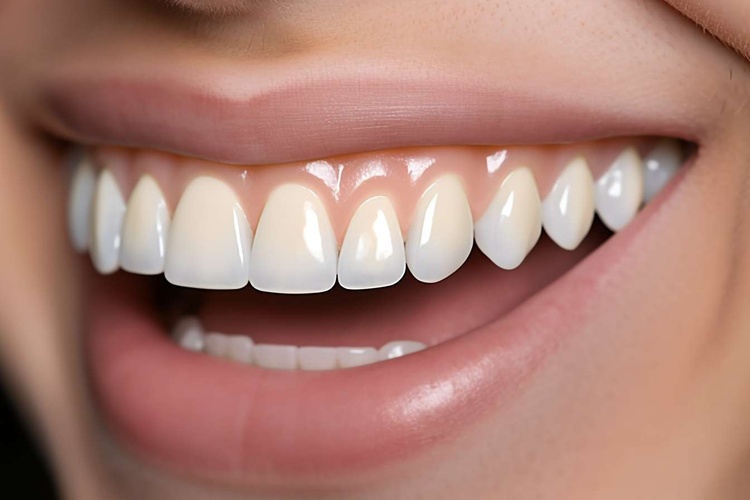Discover the Future of Dental Implants: Screwless Solutions
If you've been considering dental implants but are concerned about costs or recovery time, screwless dental implants may offer an alternative worth discussing with your dentist. These designs can simplify certain procedures and may reduce chair time and hardware needs for some patients, but affordability and suitability vary by case. A qualified clinician can assess whether screwless implants are an appropriate option based on medical history, bone structure, and treatment goals.

For decades, the standard way to secure a crown or bridge onto an implant has been a small abutment screw. Newer screwless solutions propose a different approach: a precision, conical lock that holds components together without a visible screw access channel. While not suitable for every situation, these designs aim to streamline workflows, minimise screw-related maintenance, and offer clean aesthetics. This overview explains how screwless implants differ, how they work, and which patients in the United Kingdom might benefit.
What Are Screwless Dental Implants?
Screwless dental implants are systems that do not rely on an abutment screw to connect the implant to the abutment or restoration. Instead, most use a conical, friction-based interface—often called a locking taper or Morse taper—to secure components. The implant itself still integrates with the jawbone through osseointegration; what changes is the way the visible tooth (crown) or bridge is attached. Depending on the system, the final restoration can be cemented onto the abutment or retained by precise friction without a screw access hole. The result is a clean appearance and a different maintenance profile.
Why Are Screwless Implants Becoming a Popular Choice?
Conventional, screw-retained restorations are reliable, but screw loosening and occasional repair appointments are recognised maintenance concerns. Screwless designs aim to minimise such issues by eliminating the abutment screw altogether. They also remove the need for a screw access channel through the crown, which can improve aesthetics and simplify shade matching. Some clinicians value the tight conical seal at the implant–abutment junction, which is designed to reduce micro-movement and help limit potential microgaps. Adoption is gradual, and evidence continues to develop, but interest is growing as practices in the UK evaluate alternatives to traditional connections.
How Do Screwless Implants Work?
Most screwless systems use a highly precise conical interface, usually with a very small taper angle. When the abutment is seated into the implant’s internal cone, a friction lock—sometimes described as a cold weld—secures the parts. Special seating instruments deliver a controlled tap to lock the connection; dedicated tools are used for retrieval if maintenance is required. Some systems are two-piece (implant plus abutment), while others are one-piece implants where the restorative part is integrated. Each approach has implications for angulation options, soft-tissue management, and how easily the restoration can be removed in future.
The Key Benefits of Screwless Dental Implants
Potential advantages include a smooth crown surface without a screw access hole, which can improve the look of front teeth and simplify ceramic design. The tight conical connection is designed to reduce micro-movement at the implant–abutment junction, supporting mechanical stability. With no abutment screw, there is no risk of screw loosening or screw fracture, and some patients experience fewer maintenance visits related to screw checks. In addition, a friction-fit or locking taper can help distribute forces efficiently, which may be beneficial for comfort and function when biting. As with any implant system, outcomes depend on case selection and precise surgical and restorative execution.
Are Screwless Implants Suitable for You?
Suitability depends on several clinical factors assessed by your dentist or implant clinician. Bone quality and volume, gum health, bite forces, and habits such as clenching or grinding all matter. If future retrievability is a priority—such as for complex bridges—your clinician may prefer a design that is easier to remove and service. For single-tooth cases, especially in visible areas, the absence of a screw access hole can be advantageous. Your medical history, hygiene routine, and expectations for maintenance will also guide the choice. In the UK, clinicians can advise on options available in your area and whether a screwless connection aligns with your treatment plan.
A measured view is important. While screwless systems offer attractive features, they are not universally superior. Some cases benefit from the established retrievability of screw-retained crowns, especially when managing long-span restorations or when angulation corrections are needed. Conversely, patients seeking a seamless aesthetic and simplified maintenance may find screwless connections appealing. Discussing the trade-offs, including how easily a restoration can be removed and adjusted later, helps set realistic expectations.
Maintenance remains essential regardless of connection type. Regular reviews, professional cleaning, and careful home care with floss, interdental brushes, or water flossers help support healthy tissues around the implant. Your clinician may recommend specific recall intervals and radiographic checks to monitor bone levels. If you have a screwless connection, the practice will also have retrieval tools on hand should the abutment or crown require adjustment.
In the broader context of implantology, screwless solutions represent a thoughtful refinement of how components meet and function. Their precision connections target common nuisances—like screw access aesthetics and mechanical loosening—without changing the foundational biology of osseointegration. As technology, materials, and long-term data continue to evolve, patients in the United Kingdom can expect steadily clearer guidance on when these systems add value.
This article is for informational purposes only and should not be considered medical advice. Please consult a qualified healthcare professional for personalised guidance and treatment.




